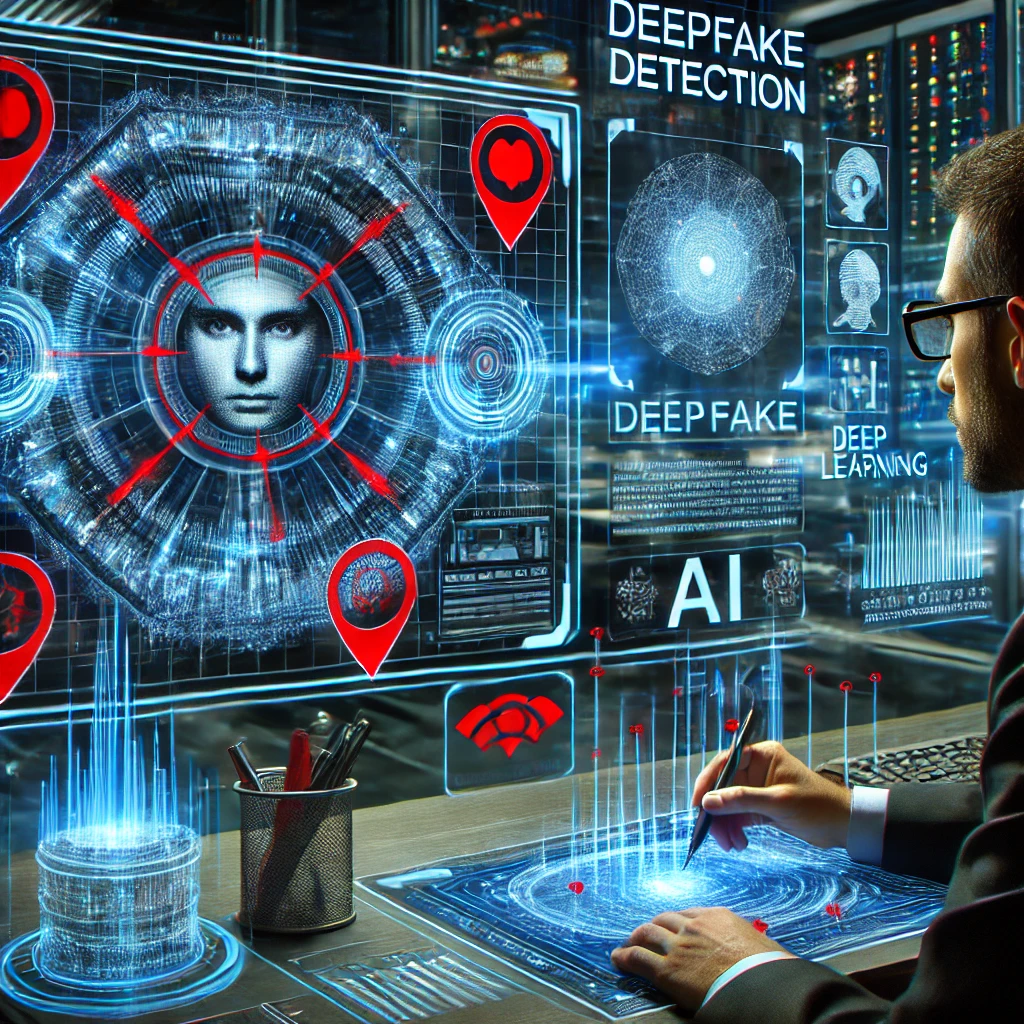Introduction
The rapid advancement of artificial intelligence (AI) has brought both benefits and challenges, with deepfake technology emerging as a significant concern. Deepfakes, created using AI-driven generative adversarial networks (GANs), can manipulate videos, audio, and images to produce realistic but false content. This poses a substantial threat to misinformation, security, privacy, and trust in digital media. To counter this growing issue, researchers and technology companies are developing deepfake detection technologies. This article explores the working mechanisms, challenges, and advancements in deepfake detection.
Understanding Deepfakes
Deepfakes are AI-generated media that can make individuals appear to say or do things they never did. They use deep learning techniques, particularly GANs and autoencoders, to create hyper-realistic synthetic content. Deepfakes are commonly used in:
- Misinformation and Fake News: Spreading propaganda, altering political speeches, and manipulating public opinion.
- Cybersecurity Threats: Identity theft, financial fraud, and phishing scams.
- Entertainment and Media: De-aging actors in films and creating virtual influencers.
- Privacy Violations: Inappropriate content generation without consent.
How Deepfake Detection Works
Detecting deepfakes involves a combination of AI-based and forensic techniques to identify inconsistencies in synthetic media. The key methods include:
1. AI-Based Detection Techniques
Modern deepfake detection tools leverage machine learning models to analyze patterns that distinguish synthetic content from real media.
- Convolutional Neural Networks (CNNs): Deep learning models trained to recognize anomalies in facial features, expressions, and skin textures.
- Recurrent Neural Networks (RNNs) and Long Short-Term Memory (LSTMs): Used for detecting inconsistencies in speech patterns and video sequences.
- Transformer-Based Models: Leveraging architectures like BERT and Vision Transformers (ViTs) to enhance detection accuracy.
- Generative Adversarial Network (GAN) Detection: Identifying artifacts left behind by deepfake generation processes.
2. Forensic Detection Techniques
- Facial Landmark Analysis: Detecting unnatural blinking, inconsistent eye movements, and asymmetrical facial expressions.
- Texture and Lighting Anomalies: Identifying irregularities in lighting, shadows, and reflections.
- Biometric Inconsistencies: Examining unique biometric patterns like pulse detection and micro-expressions.
- Audio-Visual Synchronization: Detecting mismatches between lip movements and speech patterns.
- Frame-Level Artifacts: Analyzing distortions and pixel inconsistencies within deepfake videos.
Challenges in Deepfake Detection
Despite advancements, deepfake detection faces several obstacles:
- Rapid Evolution of Deepfake Technology: AI-generated deepfakes are constantly improving, making detection methods outdated quickly.
- Generalization Issues: Detection models may struggle with unknown deepfake variations.
- Adversarial Attacks: Deepfake creators can use techniques to evade detection by modifying artifacts.
- High Computational Cost: Running deep learning-based detection models requires substantial processing power.
- Limited Real-World Data: The availability of diverse and high-quality deepfake datasets is essential for improving model robustness.
Leading Deepfake Detection Tools and Solutions
Several organizations and research institutions have developed sophisticated deepfake detection technologies:
- DeepFake Detection Challenge (DFDC): A competition by Facebook, Microsoft, and academic researchers to improve detection models.
- ForensicFace: A forensic AI model designed to detect manipulated facial images.
- Media Forensics (MediFor) Program: A DARPA initiative focused on developing media authentication tools.
- Google’s Deepfake Dataset: A publicly available dataset to train AI models for deepfake identification.
- Microsoft Video Authenticator: An AI-powered tool that detects deepfake videos by analyzing subtle visual artifacts.
Ethical and Legal Implications of Deepfake Technology
- Regulatory Measures: Governments worldwide are implementing laws to curb deepfake misuse, such as the Deepfake Accountability Act in the U.S.
- Content Authentication: Blockchain and digital watermarking are being explored to ensure media integrity.
- Public Awareness: Educating users on identifying manipulated content and verifying information sources.
Future of Deepfake Detection
As deepfake technology continues to evolve, detection methods must also advance:
- AI-Powered Detection Models: Improved algorithms using federated learning and self-supervised learning.
- Real-Time Detection: Enhancing tools that analyze videos and images in real-time to prevent misinformation spread.
- Cross-Modal Detection: Combining video, audio, and textual analysis for more robust verification.
- Partnerships Between Tech Firms and Governments: Collaborating to create global standards for digital media authentication.
Conclusion
Deepfake detection technologies play a crucial role in preserving digital integrity and preventing the malicious use of AI-generated media. By combining AI-based techniques with forensic analysis, researchers are making significant strides in identifying and mitigating deepfake threats. Continued advancements, regulatory support, and public awareness are essential in the ongoing battle against AI-driven misinformation.




